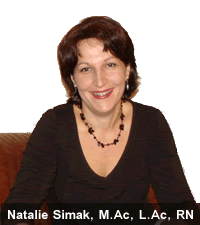Besides Acupuncture, Natalie offers Cupping!
Cupping therapy is a form of alternative medicine in which cups are placed on the skin to create suction. The cups we use in the office are made of glass. The suction of the cups mobilizes blood flow to promote the healing of a broad range of medical ailments. Cupping therapy dates back to ancient Egyptian, Chinese, and Middle Eastern cultures of 1,550 B.C.
How does cupping work? What does it treat?
In a typical cupping session, acupuncturist soaks a cotton ball in alcohol, lets, then places inside the cup for a second to burn up the oxygen. This creates a vacuum in the cup. Then she takes the cotton ball out, turns the cup upside-down and places it over a specific area. The vacuum created by the lack of oxygen anchors the cup to the skin and pulls it upward on the inside of the glass as the air inside the jar cools. Cupping pulls the skin upward and opens up the skin’s pores, which helps to stimulate the flow of blood, balances and realigns the flow of qi, breaks up obstructions, and creates an avenue for toxins to be drawn out of the body. Depending on the condition being treated, the cups will be left in place from 5 to 10 minutes. Several cups may be placed on a patient’s body at the same time.
Sometimes Natalie also applies small amounts of medicated oils or herbal oils to the skin just before the cupping procedure, which lets us move the cups up and down particular acupoints or meridians after they have been placed on the body.
Cupping is used to treat respiratory diseases such as common cold, pneumonia and bronchitis. It is also used for pain relief on back, neck, shoulder, and other musculoskeletal conditions. Cupping can be a very useful technique for women going through Assisted Reproductive Technology (ART).
Is cupping safe? Does it hurt?
 Cupping is considered relatively safe technique. It often causes swelling and bruising on the skin. As the skin under a cup is drawn up, the blood vessels at the surface of the skin expand.
This usually results in small, circular bruises on the areas where the cups were applied. These bruises are usually painless, and disappear within a few days.
In addition, there are several instances where cupping should not be performed. Patients with inflamed skin; cases of high fever or convulsions; and patients who bleed easily, are not suitable candidates for cupping. Pregnant women should not have cupping on their stomach or lower back. If the cups are being moved, they should not cross bony areas, such as the ridges of the spine or the shoulder blades.
Cupping is considered relatively safe technique. It often causes swelling and bruising on the skin. As the skin under a cup is drawn up, the blood vessels at the surface of the skin expand.
This usually results in small, circular bruises on the areas where the cups were applied. These bruises are usually painless, and disappear within a few days.
In addition, there are several instances where cupping should not be performed. Patients with inflamed skin; cases of high fever or convulsions; and patients who bleed easily, are not suitable candidates for cupping. Pregnant women should not have cupping on their stomach or lower back. If the cups are being moved, they should not cross bony areas, such as the ridges of the spine or the shoulder blades.
How many types of cupping are there and what kind of cupping does Natalie practice?
Besides the traditional "dry" cupping (also called "fire" cupping) technique, there are also "air" cupping and "wet" cupping. In “air” cupping, instead of using a flame to take out oxygen from the cup, the cup is applied to the skin, and a suction pump is attached to the rounded end of the jar. The pump is then used to create the vacuum. In “wet” cupping, the skin is punctured before treatment. When the cup is applied and the skin is drawn up, a small amount of blood may flow from the puncture site, which are believed to help remove harmful substances and toxins from the body.
Natalie Simak now only practices the "air" cupping therapy and uses the suction pump to create the vacuum.
Natalie Simak, M.Ac, L.Ac, Dipl.Ac, RN
Summary of Qualifications
-
• Over 25 Years of combined Medical Experience
-
• Master's Degree in Acupuncture, MUIH
-
• Bachelor of Science in Nursing, Johns Hopkins
-
• NCCAOM Certified Diplomate of Acupuncture
and Oriental Medicine -
• Member of MD Acupuncture Society
-
• Extensive Training in Fertility Issues
-
• Certified NADA and Aroma Therapist
-
• Taught Classes at the MUIH
-
• MD Licensed Acupuncturist and Registered Nurse

Natalie Simak is a licensed acupuncturist and registered nurse. She treats her patients at the Four Gates Wellness Center in Columbia MD. She has been working in the health care field for over twenty-five years.
She received a Master's Degree of Acupuncture from the Tai Sophia Institute (later renamed to Maryland University of Integrated Health), and she is a Diplomate of Acupuncture from the National Certification Commission for Acupuncture and Oriental Medicine (NCCAOM).
Ms. Simak is trained as a certified National Acupuncture Detoxification Association (NADA) specialist and an Aroma therapist. She is a current member of the Maryland Acupuncture Society and National Certification Commision for Acupuncture and Oriental Medicine (NCCAOM).
Her medical background includes a Bachelor's degree in Nursing from the Johns Hopkins University School of Nursing in 1997 and 17 years of experience working as a registered nurse at the adult medical unit at The Johns Hopkins Hospital in Baltimore, Maryland.
Read more about Natalie Simak...
